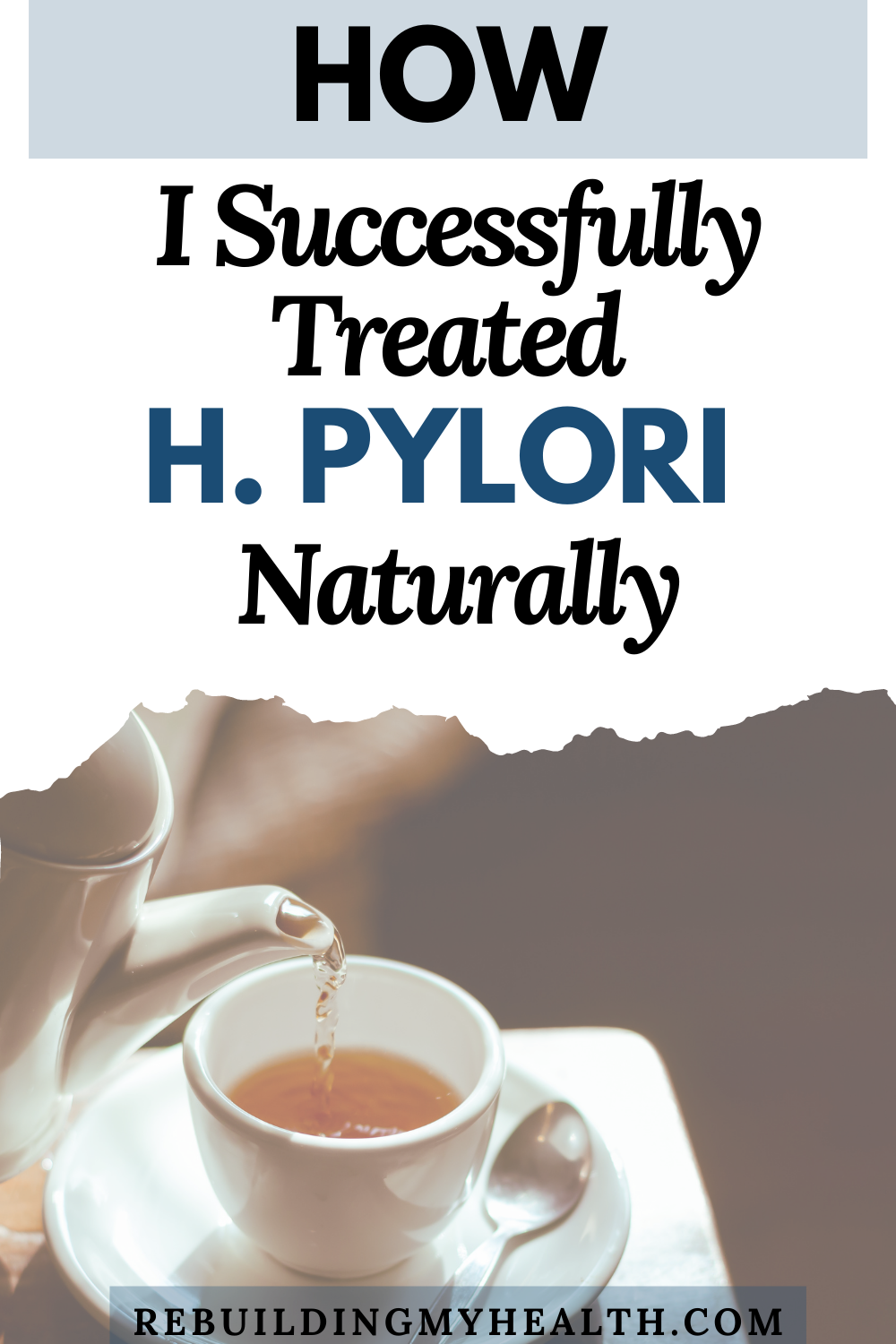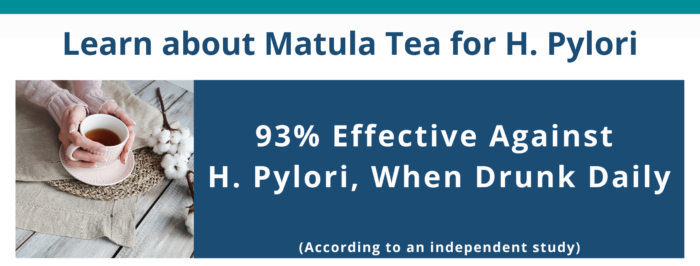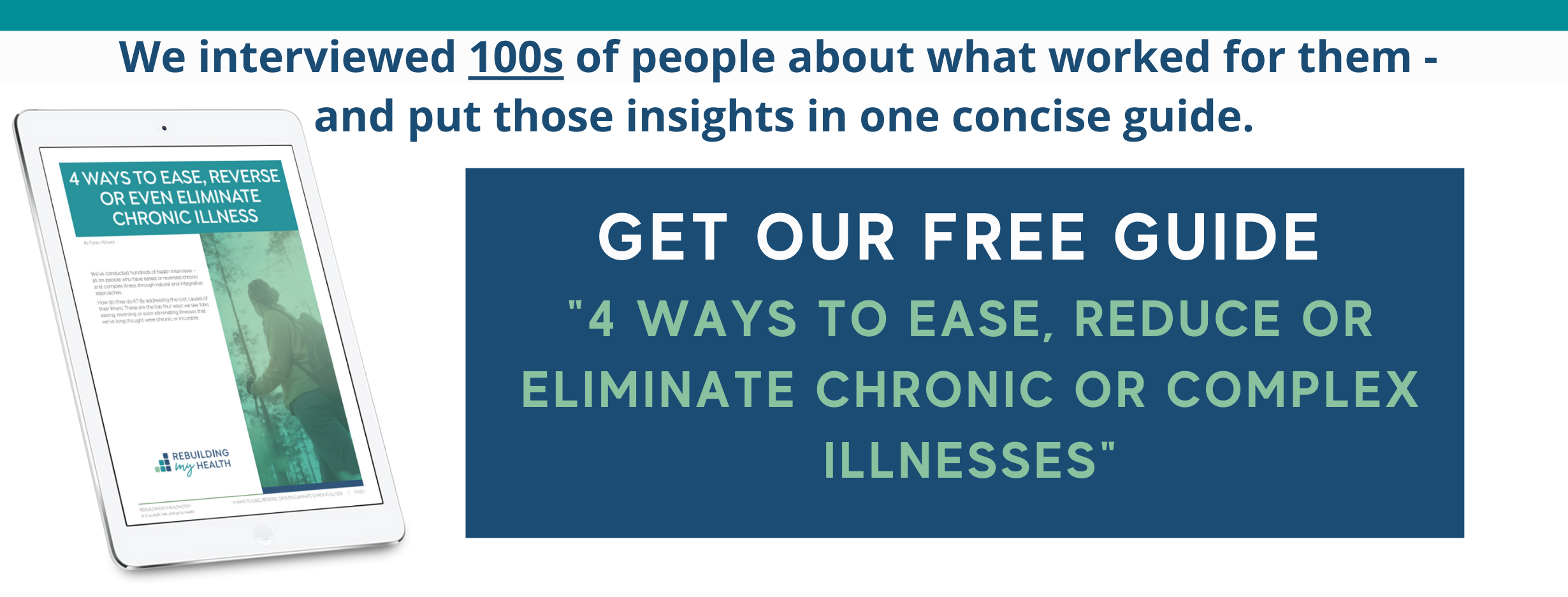How I Beat H. Pylori Naturally
“I recently took an H. pylori breath test and got a negative result! A natural treatment for H. pylori worked well – with no side effects.”
– Casey
In the past seven years, my health has come a long way. I reversed my autoimmunity and pancreatic insufficiency by healing my gut and changing my diet.
But recently, I suspected I still had some work to do. Just one slip from my grain-free diet – perhaps with a little white rice – and it seemed Candida overgrowth came raging back. My tongue was coated in white and my skin itchy. Plus, I had an icky taste in my mouth.
For help, I reached out to a digestive health coach to get a handle on a recurring overgrowth of bad bacteria.
Confirming Candida… and H. Pylori
My coach, Angela Privin of Do It Yourself Health, took my history and ordered a stool test. When results came back, I wasn’t surprised to learn that I did, in fact, have Candida overgrowth. Plus, I was positive for an infection called H. pylori.
Helicobacter pylori (H. pylori) is an infection in the lining of the stomach. It slows down cellular activity in the stomach and reduces stomach acid, possibly leading to ulcers, heartburn, burping and other symptoms. In rare cases, it can also lead to stomach cancer.
It’s the most common chronic bacterial pathogen in humans; in fact, it’s estimated that about half the people in the world have it. And the older we get, the more likely it is to have it.
But not everyone has noticeable symptoms – like me. I didn’t have symptoms typically on the list for H. pylori.
But I did have conditions caused or exacerbated by H. pylori, such as Candida, and previously, SIBO (small intestinal bacterial overgrowth).
Privin explains that, without adequate stomach acid, the bacteria you ingest through probiotics, food or drinks are not properly destroyed by stomach acid, opening the door to pathogens. It follows then that acid-suppressing drugs, by lowering stomach acid, may actually worsen H. pylori infections.
Natural Treatment for H. Pylori
Once we confirmed the presence of H. pylori, we started on a plan to treat it naturally. Here’s why I chose to treat H. pylori naturally:
- Conventional treatment for H. pylori usually involves a triple therapy of two antibiotics plus a proton-pump inhibitor (PPI). H. pylori is becoming harder to treat this way as the bacteria becomes resistant to antibiotics.
- While the protocol does work in eliminating H. pylori for some, it comes with some drawbacks. Antibiotics disrupt the microbiome by killing beneficial bacteria.
- The PPI further decreases stomach acid, which is believed to worsen H. pylori. This may also explain why it’s common for H. pylori to return after treatment; there’s not enough acid to stop it.
- I knew that Privin had helped other clients successfully treat H. pylori naturally. In fact, we featured one of her clients for doing just that.
For two months, I took the following supplements daily:
- Mastic gum capsules – Sourced from the mastic tree, this resin has antimicrobial properties and has been used traditionally in the Mediterranean for gastric symptoms.
- Matula tea – Grown in South Africa, Matula tea has been found to be potent against H. pylori. An independent study found it to be 93 percent effective against the bacteria when subjects drank it twice daily for 30 days.
- NAC (N-acetyl cysteine) – Taken with each meal, NAC worked as a biofilm buster for the H. pylori, Privin explained. By breaking down the film, the mastic gum and Matula could work on the bacteria.
- DGL – Deglycyrrhizinated licorice coats and soothes the lining of the stomach.
At the time, I took both mastic gum and matula tea (and that worked for me). However, the tea website reportedly recommends that you don’t take both at the same time because it may affect the effectiveness of the tea.
My health coach also asked me to avoid gluten, sugar, alcohol and coffee, which are all known to exacerbate H. pylori and other digestive issues. Fortunately, I was already gluten-free and sugar-free and rarely drink coffee or alcohol (though avoiding alcohol was tougher than usual during the pandemic!).
Bye, Bye Fatigue
About halfway through the protocol, I noticed things improving – symptoms that I previously had not connected to H. pylori. Amazingly, my overwhelming fatigue lifted.
For years, I’ve been telling my family and practitioners that I feel like my body is fighting something. You know that oppressive fatigue you feel when you have an infection of some type? Well, it seems like my body was fighting H. pylori.
Additionally, my Candida overgrowth improved as well. My tongue was no longer white and my skin wasn’t as itchy.
And surprisingly, 5-6 years of dry-eye went away as well. Any time I went outside, my eyes would water like crazy with a hint of wind. Now, no longer.
My anxiety is also significantly better, however, I’m doing multiple natural things for that. So it’s hard to know if treating H. pylori influenced my anxiety.
For follow-up after the protocol, I recently took an H. pylori breath test and got a negative result!
To keep H. pylori from returning, I continue to avoid gluten and sugar. On the rare times that I drink alcohol or coffee, I take DGL to coat and protect my stomach.
In short, a natural treatment for H. pylori worked well – with no side effects.
If you enjoyed this story, you might also like: When H. Pylori Hit, Wisconsin Woman Knocked it Out.
The information on this site is for educational and inspirational purposes only and is not intended to replace the advice of qualified professionals. Keep in mind that what works for one person may not work for another. Always consult your healthcare practitioners before beginning new approaches or treatments. Some links on Rebuilding My Health may be affiliate links. This means that we may receive a commission - with no additional cost to you - if you make any purchases using those affiliate links. Rebuilding My Health is a participant in the Amazon Services LLC Associates Program. Learn more.




